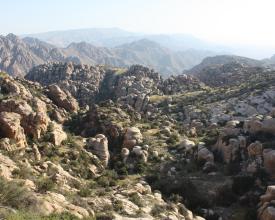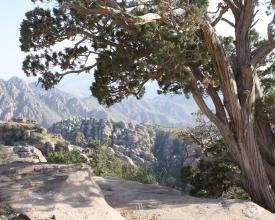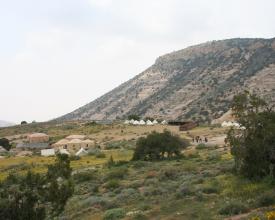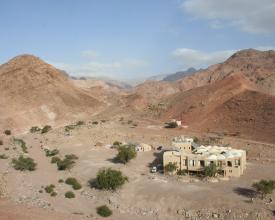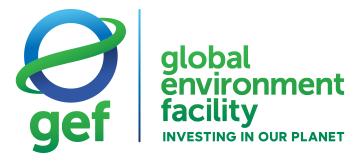
Reserva de la Biosfera de Dana: crear oportunidades de desarrollo socioeconómico para la conservación de la naturaleza
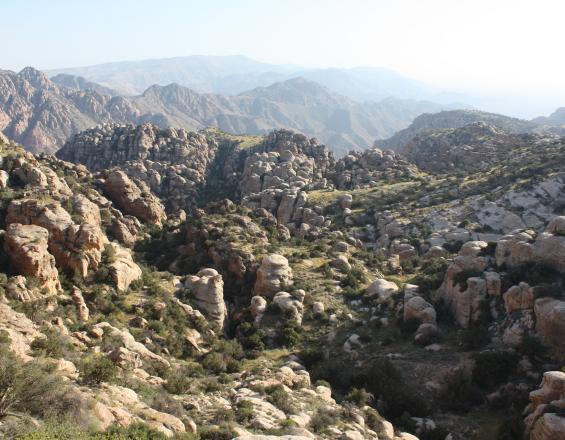
La Reserva de Dana se estableció con una superficie de unos 292 km2. En la reserva de Dana y sus alrededores vivían comunidades que dependían parcial o totalmente de la zona para su subsistencia, sobre todo para el pastoreo de cabras y ovejas. Estas personas se encontraban entre las más pobres y desfavorecidas de Jordania. En un primer momento percibieron que la reserva les privaba de sus derechos tradicionales y de las oportunidades de explotar sus recursos para sus propias necesidades sociales y económicas. Para hacer frente a estos problemas, la RSCN desarrolló distintos tipos de proyectos generadores de ingresos como: producción y envasado de plantas medicinales, producción de joyas inspiradas en la naturaleza y ecoturismo. La solución de RSCN abordó el problema de la marca y el marketing, y creó la marca "Wadi Dana", inspirada en el valle principal que atraviesa la reserva.
Contexto
Défis à relever
Ubicación
Impactos
Las oportunidades de empleo en la Reserva de Dana fueron cubiertas por residentes locales, y la reserva se centró en las familias que más dependían de la reserva natural para el pastoreo del ganado y otros medios de subsistencia. Esto ha contribuido a reducir su impacto negativo directo en la reserva.
El hecho de que las comunidades locales participaran en los programas de la reserva, como el ecoturismo y los proyectos de desarrollo socioeconómico (producción y envasado de plantas medicinales, joyería artesanal inspirada en la naturaleza), también ha contribuido a concienciar a las comunidades locales sobre su reserva y a que la sientan como propia.
El desarrollo del ecoturismo en la reserva de Dana la ha convertido en uno de los principales destinos ecoturísticos nacionales e internacionales. El camping, los senderos turísticos y la casa de huéspedes atraen a un amplio abanico de amantes de la naturaleza que buscan una escapada tranquila en plena naturaleza.
Feynan Ecolodge, establecido en la parte desértica de Dana, ha recibido elogios internacionales que lo sitúan entre los mejores ecolodges del mundo y lo elogian por su contribución a las economías locales, la conservación de la naturaleza y los viajes sostenibles.
En 2017, la Reserva Natural de Dana aportó un total de 347.652 JD (490.000 USD) en concepto de beneficios directos e indirectos a las comunidades locales, entre los que se incluyen: salarios del personal contratado localmente y adquisición local de bienes y servicios.
